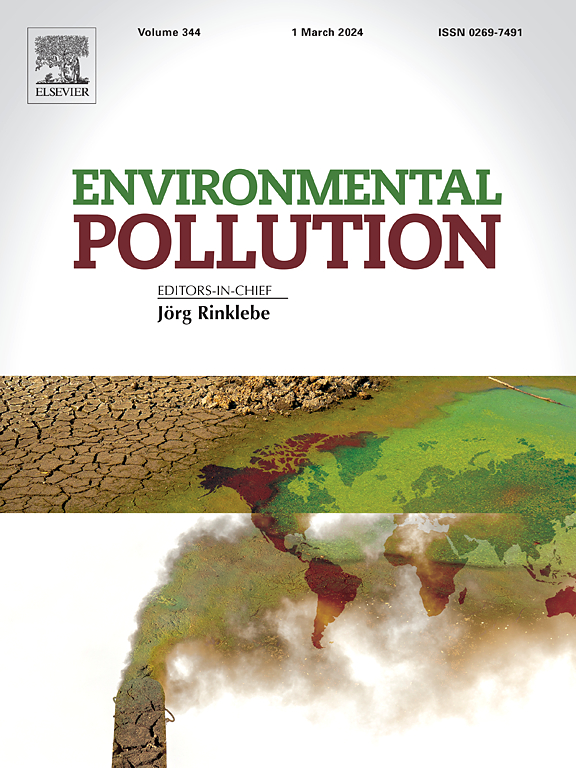Spatial Distribution and Potential Toxicity of PAHs in Contaminated Sediments in Korea Using a Passive Sampler-Based Approach
IF 7.6
2区 环境科学与生态学
Q1 ENVIRONMENTAL SCIENCES
引用次数: 0
Abstract
Due to the bioaccumulation and adverse health effects of polycyclic aromatic hydrocarbons (PAHs) on aquatic organisms, evaluating their potential toxicity in sediments is essential. Particularly, as industrial activities and urbanization expand, PAHs are increasingly being introduced into marine ecosystems. Passive samplers (PS) have been widely used to measure the concentration of freely dissolved (Cfree) PAHs and assess their potential toxicity in sediment porewater. In this study, Cfree was measured using passive samplers to assess the potential toxicity of contaminated sediments near industrial facilities in Korea. The maximum Cfree levels in OS, JS, and OP were 201 ng/L, 70 ng/L, and 77 ng/L, respectively, indicating relatively high levels compared to other areas in Korea. Additionally, the spatial distribution of Cfree was influenced by regional characteristics and sediment properties. The potential toxicity was evaluated using four key factors: Cfree, biota-sediment accumulation factor (BSAF), interstitial water toxicity units (IWTUs), and chemical activity (a). Although the sedimentary PAH levels in these three harbors may not currently exhibit adverse effects on organisms based on these factors, inner sites could pose potential toxicity risks in the future. The findings of this study suggest the necessity for further research using PS techniques at potentially contaminated sites to enhance understanding of ongoing contamination, ecological risks, and strategies for improving sediment management.

采用被动采样器方法研究韩国受污染沉积物中多环芳烃的空间分布和潜在毒性
本文章由计算机程序翻译,如有差异,请以英文原文为准。
求助全文
约1分钟内获得全文
求助全文
来源期刊

Environmental Pollution
环境科学-环境科学
CiteScore
16.00
自引率
6.70%
发文量
2082
审稿时长
2.9 months
期刊介绍:
Environmental Pollution is an international peer-reviewed journal that publishes high-quality research papers and review articles covering all aspects of environmental pollution and its impacts on ecosystems and human health.
Subject areas include, but are not limited to:
• Sources and occurrences of pollutants that are clearly defined and measured in environmental compartments, food and food-related items, and human bodies;
• Interlinks between contaminant exposure and biological, ecological, and human health effects, including those of climate change;
• Contaminants of emerging concerns (including but not limited to antibiotic resistant microorganisms or genes, microplastics/nanoplastics, electronic wastes, light, and noise) and/or their biological, ecological, or human health effects;
• Laboratory and field studies on the remediation/mitigation of environmental pollution via new techniques and with clear links to biological, ecological, or human health effects;
• Modeling of pollution processes, patterns, or trends that is of clear environmental and/or human health interest;
• New techniques that measure and examine environmental occurrences, transport, behavior, and effects of pollutants within the environment or the laboratory, provided that they can be clearly used to address problems within regional or global environmental compartments.
 求助内容:
求助内容: 应助结果提醒方式:
应助结果提醒方式:


